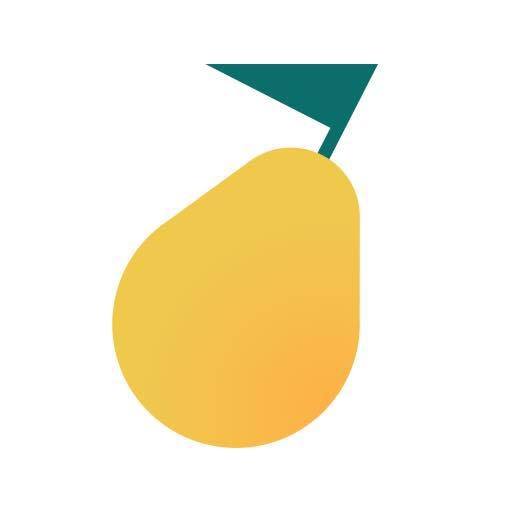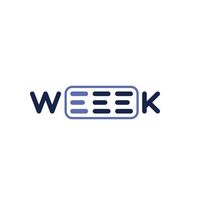The Evolution of Project Management Tools in 2025: A Survival Guide
January 13, 2025, 4:33 pm

Location: United States, California, Redwood City
Employees: 11-50
Founded date: 2011
In the ever-changing landscape of project management, 2025 brings a new wave of tools that have either thrived or faded away. As companies adapt to remote work and digital collaboration, the right project management system can be the difference between chaos and clarity. This article explores the top project management tools that have survived the tumultuous tides of change, focusing on their unique features, strengths, and weaknesses.
Project management tools are like the lifeboats of a sinking ship. Some are sturdy and reliable, while others are flimsy and prone to capsizing. In 2025, ten systems stand out, each offering a unique set of functionalities tailored to various needs. Let’s dive into the ocean of options and see which tools are worth your time.
YouGile is a beacon for teams embracing Agile methodologies. Its unique features include an integrated chat within tasks, making communication seamless. Imagine a bustling café where every conversation is just a table away. YouGile offers a plethora of extensions, allowing teams to customize their experience. The ability to create mirrored columns enhances collaboration across departments, like synchronized swimmers in perfect harmony.
However, it’s not without its flaws. Larger projects may find its budget management capabilities lacking. Still, for teams of up to ten, it’s a free ride on the project management express.
Bitrix24 is akin to a Swiss Army knife for businesses. It combines CRM, project management, and communication tools into one robust platform. Its AI assistant, CoPilot, acts like a personal concierge, streamlining tasks and generating insights. However, this complexity can overwhelm smaller teams, much like a grand buffet that leaves you unsure of where to start.
While the free version offers limited features, the paid plans provide a treasure trove of functionalities, making it suitable for larger organizations needing comprehensive solutions.
Pyrus shines in document management and automation. It’s like having a personal assistant who never forgets a deadline. With features like document templates and approval workflows, it streamlines processes for consulting and legal firms. However, its project management capabilities are somewhat limited, making it less ideal for teams focused solely on project tracking.
For those who prioritize document handling, Pyrus is a solid choice, especially with its free tier for unlimited users.
Megaplan is a robust solution for small to medium-sized businesses. It integrates CRM with project management, creating a cohesive environment for managing clients and tasks. Its video conferencing feature is a cherry on top, facilitating communication without the need for third-party tools. However, its interface can feel cluttered, like a crowded marketplace.
The trial period allows teams to test the waters before committing, making it a worthwhile consideration for businesses looking for an all-in-one solution.
Kaiten stands out for its automation capabilities. It’s like having a well-oiled machine that takes care of repetitive tasks. With user story mapping and combined boards, it visualizes workflows effectively. However, it lacks advanced project management features like Gantt charts, which may leave some teams wanting more.
For those who thrive on Kanban methodologies, Kaiten offers a refreshing approach to task management.
WEEEK caters to small teams and freelancers, offering a vibrant interface with customizable colors. Its Pomodoro timer helps users manage their time effectively, like a personal coach cheering you on. However, its limited functionality for larger projects may hinder growth.
For creative teams and startups, WEEEK provides a playful yet productive environment.
PlanFix excels in task prioritization and automation. It’s like a finely tuned orchestra, where every instrument plays its part in harmony. The built-in CRM and customizable workflows make it adaptable to various business needs. However, its complexity can be daunting for new users, requiring a learning curve akin to mastering a new instrument.
For businesses that value customization, PlanFix is a worthy contender.
Shtab offers unique features for tracking employee activity, making it ideal for remote teams. Its ability to share task cards with external users adds a layer of flexibility. However, as a newer service, it may lack the robustness of more established tools.
For teams that prioritize collaboration and oversight, Shtab provides valuable insights into productivity.
1C is designed for companies already using the 1C ecosystem. Its deep integration with accounting and inventory systems makes it a powerhouse for financial management. However, its complexity and high implementation costs can be a barrier for smaller businesses.
For those entrenched in the 1C environment, this tool is indispensable.
ADVANTA is tailored for large enterprises managing multiple projects. Its risk management features and visual report builder are invaluable for strategic oversight. However, its complexity and cost may deter smaller teams.
For organizations that require a comprehensive project portfolio management solution, ADVANTA is a formidable choice.
In 2025, the project management landscape is diverse and dynamic. Each tool offers unique strengths and weaknesses, catering to different needs and team sizes. The key is to identify what your team values most—be it automation, integration, or user-friendliness.
As the digital world continues to evolve, so too will these tools. Staying informed and adaptable is crucial. Choose wisely, and your project management journey can be as smooth as a well-planned road trip.
Project management tools are like the lifeboats of a sinking ship. Some are sturdy and reliable, while others are flimsy and prone to capsizing. In 2025, ten systems stand out, each offering a unique set of functionalities tailored to various needs. Let’s dive into the ocean of options and see which tools are worth your time.
1. YouGile: The Agile Companion
YouGile is a beacon for teams embracing Agile methodologies. Its unique features include an integrated chat within tasks, making communication seamless. Imagine a bustling café where every conversation is just a table away. YouGile offers a plethora of extensions, allowing teams to customize their experience. The ability to create mirrored columns enhances collaboration across departments, like synchronized swimmers in perfect harmony.
However, it’s not without its flaws. Larger projects may find its budget management capabilities lacking. Still, for teams of up to ten, it’s a free ride on the project management express.
2. Bitrix24: The All-in-One Powerhouse
Bitrix24 is akin to a Swiss Army knife for businesses. It combines CRM, project management, and communication tools into one robust platform. Its AI assistant, CoPilot, acts like a personal concierge, streamlining tasks and generating insights. However, this complexity can overwhelm smaller teams, much like a grand buffet that leaves you unsure of where to start.
While the free version offers limited features, the paid plans provide a treasure trove of functionalities, making it suitable for larger organizations needing comprehensive solutions.
3. Pyrus: The Document Dynamo
Pyrus shines in document management and automation. It’s like having a personal assistant who never forgets a deadline. With features like document templates and approval workflows, it streamlines processes for consulting and legal firms. However, its project management capabilities are somewhat limited, making it less ideal for teams focused solely on project tracking.
For those who prioritize document handling, Pyrus is a solid choice, especially with its free tier for unlimited users.
4. Megaplan: The Business Integrator
Megaplan is a robust solution for small to medium-sized businesses. It integrates CRM with project management, creating a cohesive environment for managing clients and tasks. Its video conferencing feature is a cherry on top, facilitating communication without the need for third-party tools. However, its interface can feel cluttered, like a crowded marketplace.
The trial period allows teams to test the waters before committing, making it a worthwhile consideration for businesses looking for an all-in-one solution.
5. Kaiten: The Automation Advocate
Kaiten stands out for its automation capabilities. It’s like having a well-oiled machine that takes care of repetitive tasks. With user story mapping and combined boards, it visualizes workflows effectively. However, it lacks advanced project management features like Gantt charts, which may leave some teams wanting more.
For those who thrive on Kanban methodologies, Kaiten offers a refreshing approach to task management.
6. WEEEK: The Creative Workspace
WEEEK caters to small teams and freelancers, offering a vibrant interface with customizable colors. Its Pomodoro timer helps users manage their time effectively, like a personal coach cheering you on. However, its limited functionality for larger projects may hinder growth.
For creative teams and startups, WEEEK provides a playful yet productive environment.
7. PlanFix: The Customization Champion
PlanFix excels in task prioritization and automation. It’s like a finely tuned orchestra, where every instrument plays its part in harmony. The built-in CRM and customizable workflows make it adaptable to various business needs. However, its complexity can be daunting for new users, requiring a learning curve akin to mastering a new instrument.
For businesses that value customization, PlanFix is a worthy contender.
8. Shtab: The Monitoring Maestro
Shtab offers unique features for tracking employee activity, making it ideal for remote teams. Its ability to share task cards with external users adds a layer of flexibility. However, as a newer service, it may lack the robustness of more established tools.
For teams that prioritize collaboration and oversight, Shtab provides valuable insights into productivity.
9. 1C: Project Management: The Integration Specialist
1C is designed for companies already using the 1C ecosystem. Its deep integration with accounting and inventory systems makes it a powerhouse for financial management. However, its complexity and high implementation costs can be a barrier for smaller businesses.
For those entrenched in the 1C environment, this tool is indispensable.
10. ADVANTA: The Strategic Planner
ADVANTA is tailored for large enterprises managing multiple projects. Its risk management features and visual report builder are invaluable for strategic oversight. However, its complexity and cost may deter smaller teams.
For organizations that require a comprehensive project portfolio management solution, ADVANTA is a formidable choice.
Conclusion: Navigating the Project Management Landscape
In 2025, the project management landscape is diverse and dynamic. Each tool offers unique strengths and weaknesses, catering to different needs and team sizes. The key is to identify what your team values most—be it automation, integration, or user-friendliness.
As the digital world continues to evolve, so too will these tools. Staying informed and adaptable is crucial. Choose wisely, and your project management journey can be as smooth as a well-planned road trip.

